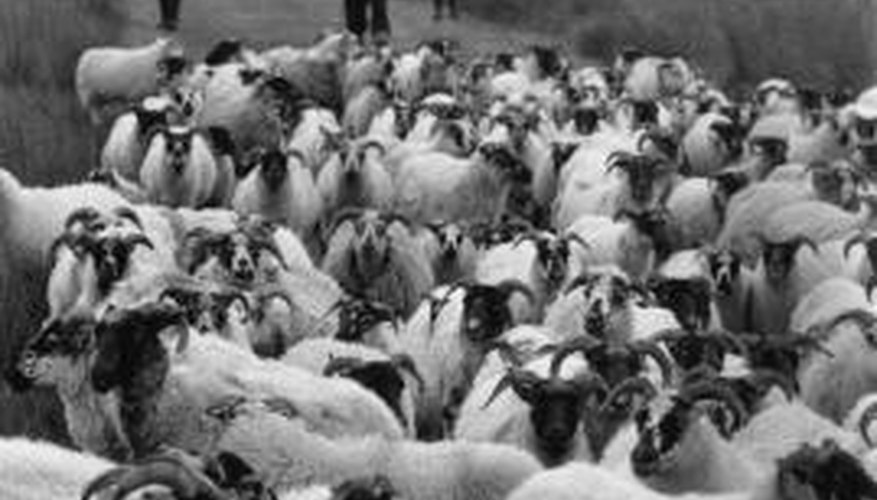You can make a sheep sculpture out of metal wire. Metal wires come in different diameters called "gauges." Wire that is 21, 22 or 24 gauge is thin and very malleable, and therefore easier to shape. You can create small sculptures that are between a few inches and a few feet in size with thin wire. Wire that is 18, 19 or 20 gauge is a thicker and stronger wire that is useful for building the inner frame of larger sculptures, to which you can add details using wire of a thinner gauge. There are a few different kinds of metal wire to choose from, including copper, brass, silver or steel wire.
- You can make a sheep sculpture out of metal wire.
- Wire that is 18, 19 or 20 gauge is a thicker and stronger wire that is useful for building the inner frame of larger sculptures, to which you can add details using wire of a thinner gauge.
Find an image of a sheep in a book or online. Print out the image or mark the page in your book so that you can refer back to the picture. Note the pose of the sheep and its overall features so that you can reproduce them in your sculpture.
Using your pencil and notebook, make a sketch of ideas you have for your wire sculpture. Consider how you will use wire to express the sheep's body shape, whether you want to make a two-dimensional or three-dimensional sculpture, whether you want to make a free-standing sculpture and how large you want the sculpture to be.
Focus first on creating a framework to support the sheep's body. This frame will vary based on your design conception, but may include four legs supporting an oval or cylindrical rib cage that forms the torso of your sheep sculpture, along with a neck and head. You do not need to build a frame if you are making a two-dimensional sheep sculpture.
Wear thick work gloves to protect your hands. Cut lengths of wire using your wire cutters, and shape them into the body, legs and head of the sheep.
- Using your pencil and notebook, make a sketch of ideas you have for your wire sculpture.
- Cut lengths of wire using your wire cutters, and shape them into the body, legs and head of the sheep.
Twist or bind the wire ends together with thin strips of 22 gauge wire wrapped securely around the point where the two wires meet.
Stand this construction up to ensure that your design is stable without you supporting it. If it falls over or tilts, reshape the sculpture until it is stable and stands on its own.
Refer to your sheep picture to get an idea of how a sheep's body looks at the point where the limbs attach. You can wrap wires over a larger area to create the aesthetic effect of shoulder or thigh muscles.
Create spiral corkscrews by clipping the end of a piece of wire and twirling the wire around the end of the pliers. You can affix these corkscrews along the body, neck and head of the sheep to mimic the shape of sheep's wool.
- Twist or bind the wire ends together with thin strips of 22 gauge wire wrapped securely around the point where the two wires meet.
- You can affix these corkscrews along the body, neck and head of the sheep to mimic the shape of sheep's wool.
Use needle-nose pliers to shape wire into the shape of eyes, nose and mouth for the sheep's face. Use separate pieces of smaller gauge wire to create these details and then attach them to the sculpture's head.
TIP
Shop for wire at your local metal scrap yard. You can often find a few different kinds of metal wires here for a lower cost than buying the material new.
WARNING
Make sure your tetanus shot is up to date before working with metal wire.
